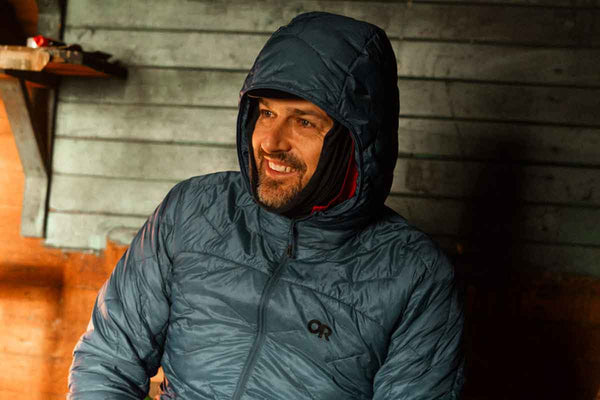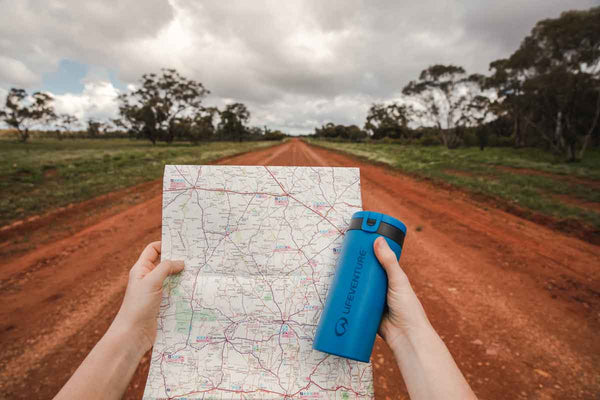
Beginners Guide to Winter in the Snowy Mountains
Winter in the Snowy Mountains is nothing short of magical. Crisp alpine air, snow-covered peaks, and Australia’s highest summit, Mount Kosciuszko, transformed by a winter wonderland. But beneath the beauty lies a challenge that demands respect, preparation, and the right gear. Whether you're new to snow hiking or fine-tuning your winter trekking skills, this guide will walk you through everything you need for a safe and unforgettable winter hike in Kosciuszko National Park.
PLANNING
Choose Your Route Wisely
Start small and work your way up. If it’s your first time hiking in snow, select a manageable trail or a car-accessible campground to base yourself from. The Thredbo to Mt Kosciuszko route is the most popular and beginner-friendly, using the Kosciuszko Express Chairlift to reach the trailhead at Eagles Nest. From there, it’s a 13km return walk.
Hiking with someone experienced can make all the difference — they’ll know what signs to look for in the snow, how to pace the hike, and what to do if weather shifts. Confidence and safety go hand-in-hand when venturing into alpine terrain.
Stay Connected: Don't Rely on Bars
When you're hiking in the Snowy Mountains, especially during winter, staying connected isn’t just about convenience — it’s about safety. Mobile reception drops out quickly in alpine areas, and once you’re deep in the backcountry, you may have no signal at all.
Before you head out, check which areas have coverage and download offline maps or GPS tools you can use without reception. If you’re venturing further from civilisation or planning a longer hike, consider carrying a satellite communicator, like the Garmin inReach Messenger. It allows you to send updates, check weather forecasts, or call for help — even when you’re off the grid.
Not ready to invest in your own device? You can borrow a free Personal Locator Beacon (PLB) from select NSW National Parks Visitor Centres. These small devices send your exact GPS coordinates to emergency services when activated, and could quite literally save your life in a worst-case scenario.
No matter what tech you carry, always leave a trip plan with someone you trust. Tell them where you’re going, when you expect to return, and what to do if they don’t hear from you. It’s a simple step that makes a huge difference.jgjhkj
Check the Weather: The Mountains Don't Care If You're Cold
Alpine weather is notorious for its unpredictability, especially in winter. What starts as a bluebird day can quickly shift to whiteout conditions, with gale-force winds, snowstorms, or freezing fog rolling in without warning.
Before your hike, always check the Bureau of Meteorology (BOM) for detailed mountain forecasts. Look beyond just temperature — pay close attention to wind speeds, snowfall predictions, visibility, and any active weather warnings for the region.
And most importantly: be honest with yourself about your skills and equipment. If the forecast calls for blizzard conditions, heavy snowfall, or dangerously low temperatures, reschedule your hike. The mountain will still be there next week.
Even if you're already on the trail, stay alert. If the weather starts to turn — skies darken, winds pick up, visibility drops — don’t hesitate to turn back. Reaching the summit is optional. Getting home safely is not.
Emergency Plan
Alpine environments are stunning — but they’re also remote, rugged, and subject to rapid weather changes. That’s why having a well-thought-out emergency plan is just as important as your boots or jacket.
Always carry a comprehensive first aid kit, and make sure someone in your group knows how to use it. Hypothermia and injury are real risks in cold conditions, especially if you’re caught off-guard or delayed. Plan for scenarios like someone twisting an ankle, falling through snow, or developing signs of cold stress — and discuss these situations with your group before setting out.
You should also leave a detailed trip plan with someone back home. Include your route, expected return time, and when you’ll check in. If something goes wrong and you don’t return on time, this information can help emergency services reach you faster.
For longer hikes or more remote areas, customise your emergency strategy. What’s your nearest exit point? Is there mobile signal at the trailhead? Should you carry a PLB (Personal Locator Beacon) or satellite communicator? Asking these questions in advance — and answering them clearly — can be life-saving if things don’t go to plan.
GEARING UP
Dress for the Conditions: Master the Art of Laryering
When hiking in the Snowy Mountains during winter, what you wear can make or break your experience. Layering your clothing isn’t just about comfort — it’s critical for maintaining warmth, staying dry, and avoiding hypothermia. The alpine weather is unpredictable, and your body will be working hard in cold, snowy conditions, so your gear needs to regulate temperature while protecting you from wind, snow, and sweat.
Start with a base layer made of merino wool or moisture-wicking synthetic fabric. This sits directly against your skin and helps draw sweat away from your body. Over that, wear a mid-layer like a fleece or down jacket — this provides essential insulation by trapping heat. On the outside, a waterproof and windproof shell jacket and pants will shield you from snow, icy wind, and sudden weather changes.
Don’t forget the accessories. Waterproof gloves, a thermal beanie, and a neck gaiter or buff are vital for protecting extremities. And since UV rays are stronger at higher altitudes and reflect off snow, bring high-quality sunglasses or snow goggles to protect your eyes.
- Base Layer (next to skin): Merino or synthetic thermal top and bottoms
- Mid Layer: Fleece or down jacket for insulation
- Outer Layer: Waterproof and windproof jacket & pants
- Extras: Gloves (waterproof if snowing), beanie, buff or neck warmer, sunglasses or snow goggles (UV exposure is stronger on snow)
Footwear: Stability and Warmth
Snowy trails can be unpredictable — icy patches, slushy puddles, or deep powder are all part of the adventure. That’s why having the right footwear is crucial for both safety and comfort.
Start with a pair of waterproof hiking boots that offer good ankle support and solid tread. Insulation is important, but breathability matters too — your feet will sweat, even in cold weather. Pair your boots with merino wool socks, which wick moisture and keep your feet warm even if damp.
For deeper snow or icy conditions, you might need gaiters to prevent snow from creeping into your boots and soaking your socks. If the snow is especially soft or deep, snowshoes will help you float above it rather than sink with each step. And on icy stretches or compacted snow, crampons or microspikes can provide the extra traction you need to avoid slipping.
Your feet are your foundation on any hike — in winter, they’re also your front line of defence against the cold. Take care of them, and the rest of your body will thank you.
Must Haves
- Backpack with rain cover to protect your gear
- Map, compass, and GPS/offline maps for reliable navigation
- Headlamp with extra batteries in case you’re out after dark
- Emergency bivvy or thermal blanket for unexpected situations
- At least 2L of water (snow needs treatment before drinking)
- High-energy snacks to keep your energy up
- Sunscreen and lip balm with SPF to protect from UV rays
- Sunglasses or snow goggles to prevent snow glare
ON THE TRAIL
Start Early and Pace Yourself
Winter hikes take more time and energy than summer ones. From bundling up in layers to navigating slippery or deep snow, everything slows down. To make the most of daylight, start your hike early. This gives you plenty of time to reach your destination and return safely before dusk.
Keep a steady, manageable pace — rushing increases fatigue and risk of injury. Take regular breaks to hydrate and snack often; your body burns more calories in cold weather to maintain warmth. Listening to your body’s signals is essential to avoid exhaustion.
Stay Close and Stay Orientated
Snow-covered trails and faded markers can easily cause disorientation, especially during whiteouts or heavy snowfall. Stick close to your group, watch for recognizable landmarks, and maintain clear communication. If visibility worsens or anyone feels uncertain, don’t hesitate to turn back early. Remember, the summit is a goal, not a rule.
Watch the Weather and Adjust
Mountain weather is famously unpredictable, especially in winter. Even if you set out under clear skies, conditions can change rapidly. Be alert to signs like dropping temperatures, increasing wind, darkening clouds, or falling snow. If the environment feels unsafe or your visibility declines, prioritize safety by heading back.
Leave No Trace
The Snowy Mountains’ pristine alpine environment is delicate and easily impacted by human activity, especially in winter when plants and wildlife are vulnerable. Practicing Leave No Trace principles is essential to preserve this incredible landscape for generations to come.
Pack Out Everything You Bring In - Yes, Everything
One of the most important rules is to carry out all your waste—no exceptions. This includes food wrappers, used tissues, hygiene products, and any other trash. Even human waste must be packed out in many alpine areas to prevent contamination and protect the ecosystem. Compostable waste bags or specialized pack-out kits are widely available at outdoor stores and national park centers, making it easy to stay responsible.
Remember to pack out:
- Food wrappers
- Food scraps
- Used tissues and hygiene items
- Your own human waste — yes, really! It’s required in many alpine areas. Bring compostable waste bags or a pack-out system. You’ll find info in most outdoor stores or from National Parks staff.
Stick to Trails
One of the most important rules is to carry out all your waste—no exceptions. This includes food wrappers, used tissues, hygiene products, and any other trash. Even human waste must be packed out in many alpine areas to prevent contamination and protect the ecosystem. Compostable waste bags or specialized pack-out kits are widely available at outdoor stores and national park centers, making it easy to stay responsible.
Respect Wildlife
Winter is a challenging time for animals, so it’s crucial to observe wildlife from a distance without feeding or disturbing them. Keeping noise to a minimum helps preserve the natural peace and reduces stress on the animals. Remember, the quiet and solitude are part of what makes winter hiking in the Snowies so magical.
- Don’t feed or approach animals
- Observe quietly from a distance
- Protect the peace of this wild place — it’s part of what makes winter hiking so special
READY TO GET STARTED?
Winter in the Snowy Mountains isn’t just a hike — it’s an adventure. From snow-covered ridgelines to windswept alpine plateaus, the trail to Mount Kosciuszko offers an unforgettable experience for those who are prepared. With the right gear, smart planning, and respect for the elements, hiking in snow can be safe, empowering, and wildly rewarding.
Use this guide as your foundation, but don’t stop here. Every trip into the mountains teaches something new — about the landscape and about yourself. Whether you're preparing for your first winter hike or levelling up your skills, keep learning, stay curious, and never underestimate the power of nature.
Need more help getting started? Check out our winter packing list, gear reviews, and route guides — all designed to help you hike smarter, safer, and stronger in the snow
Happy hiking — and stay safe out there.




